IUCN STATUS
Savannah – Endangered; Forest – Critically Endangered
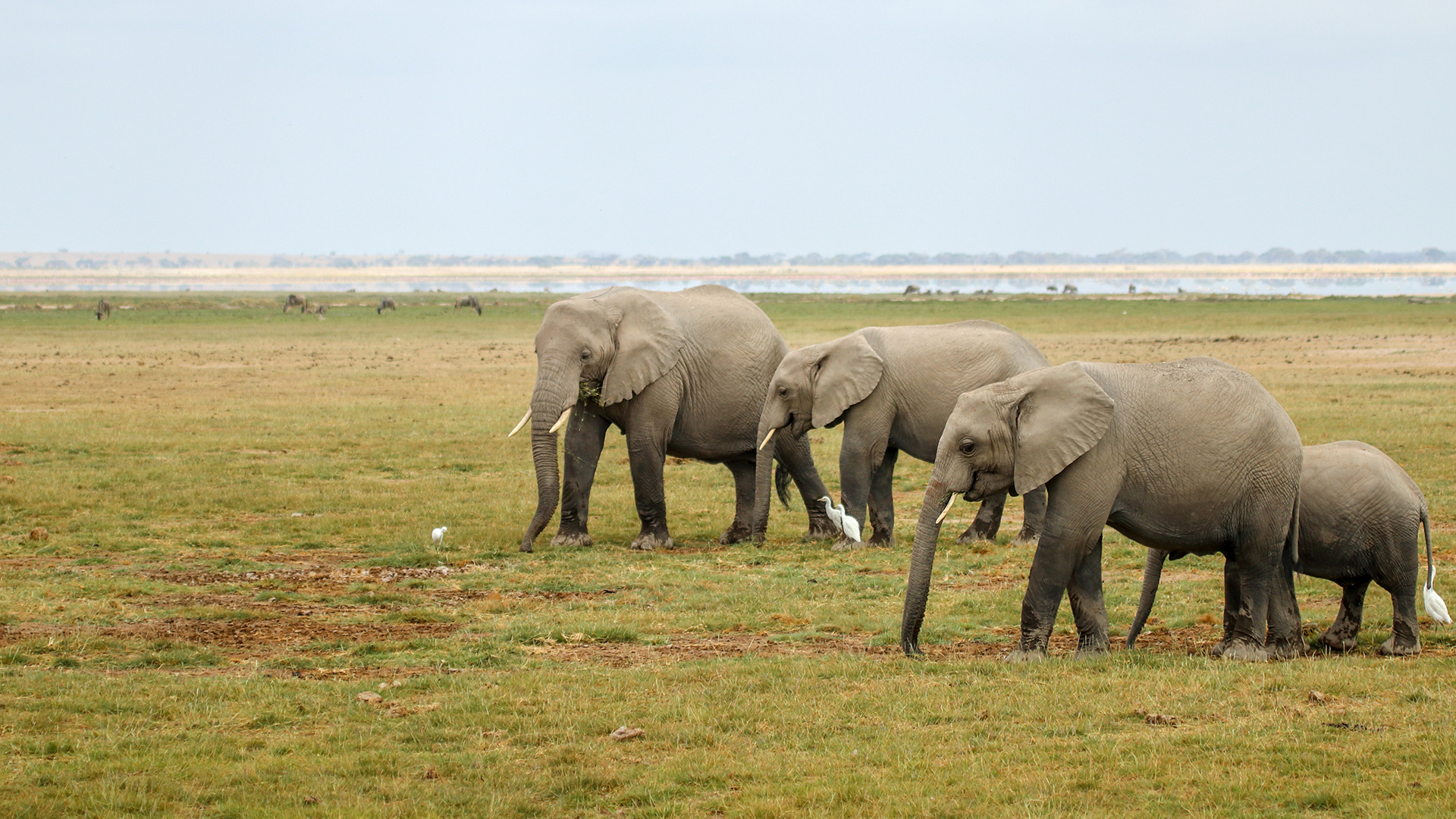
Loxodonta africana & Loxodonta cyclotis
They help disperse plants by leaving undigested seeds in their dung. Uprooting, bending and trampling trees alters their landscape helping other animals survive and encouraging plant growth.
Savannah – Endangered; Forest – Critically Endangered
~415,000* (both species combined), declining – last assessed in 2020
* According to the International Union for the Conservation of Nature (IUCN)
Herbivorous
Savannah: Forest, Shrubland, Savannah, Grassland, Wetlands, Desert
Forest: Forest, Savannah, Shrubland
Savannah: throughout the savannas of sub-Saharan Africa and the rainforests of Central and West Africa.
Forest: rainforests of west and central Africa.
Savannah: poaching for ivory, habitat loss and fragmentation, human-elephant conflict, captivity
Forest: poaching for ivory and bushmeat, habitat loss and fragmentation, human-elephant conflict
Savannah: height – females are on average 2.4m tall at the shoulder, whereas males average 3 to 3.3m tall; weight – females up to 3,600kg, males almost double at 6,800kg
Forest: height – between 2.1 and 2.4m; weight – between 2,700kg and 4,000kg
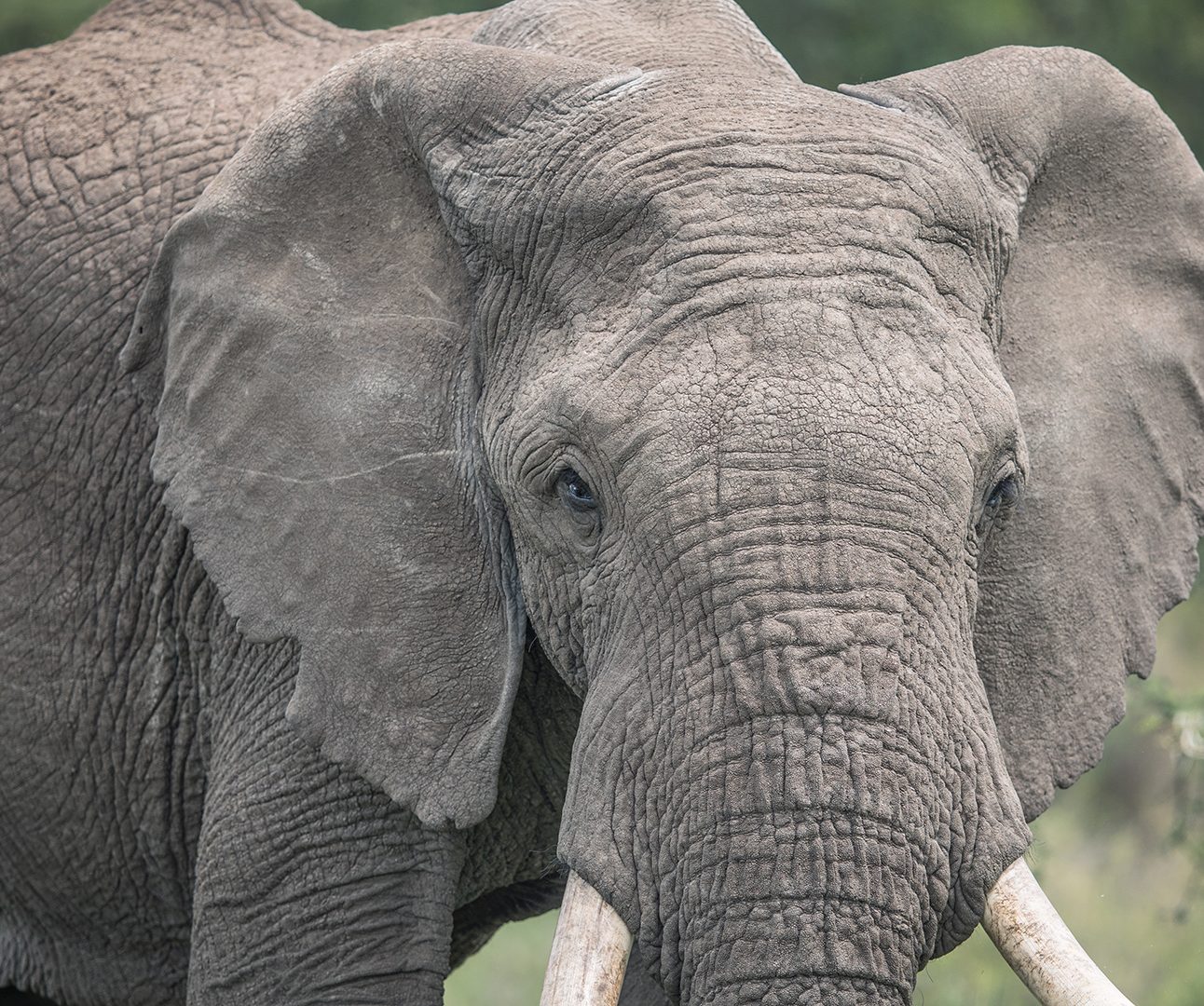
Elephants can communicate using vocalisations, body language, scents and touch. Over long distances, elephants can use their ‘rumbles’, which are low-pitched sounds that aren’t audible to humans, but can be heard by other elephants in the air and through vibrations in the ground.
African elephants are the largest land mammal and have a number of distinctive physical characteristics. Their trunks are used to pick up food, draw water, breathe and greet other elephants. Their large ears help them keep cool and communicate a range of emotions. Adult African elephants have two tusks which are used to peel bark off trees, mine for minerals and defend against predators.
Until 2021, African elephants were considered a single species, with forest elephants a subspecies. However, recent studies showed that their DNA differed significantly, and in 2021, the two were recognised as distinct species with the IUCN assessing forest elephants as Critically Endangered. Both have a lifespan of up to 70 years. Although similar, there are some key differences.
African savannah elephants are the larger of the two species and are characterised by rough, thick skin, curved tusks (the elephant’s incisor teeth) and large ears, that are packed with blood vessels, allowing their ears to act like an air conditioner.
African forest elephants are much smaller, have smoother skin and their tusks tend to be straighter. Their ears are much rounder than savannah elephant’s ears.
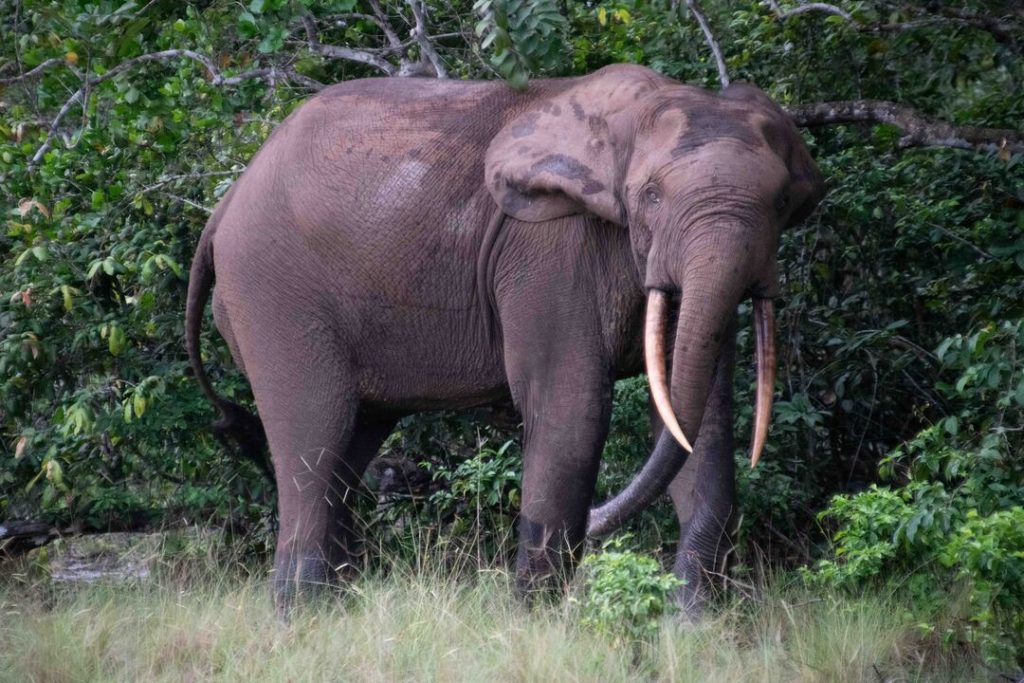
African forest elephant (c) Dave Currey
Savannah elephants live in family groups, called herds, led by a dominant female – the matriarch. Bull elephants leave the matriarchal herd when they reach sexual maturity, then move alone or in bachelor herds. Herds can consist of 100 individuals or more, and they can move huge distances in search of food and water; for example, elephants in the deserts of Mali migrate across an area of 12,355 square miles.
Once a year, from the age of 25, males can enter musth, which can last for a few days up to a couple of months. Elevated levels of testosterone can make them very aggressive, and behaviours include swinging their heads, flapping their ears, digging with their tusks and emitting low, rumbling noises. They also secrete a hormone-rich substance from their glands on the side of their head. Musth does not necessarily coincide with females being receptive to mating, so its purpose is not entirely to reproduce. The aggressive behaviours may aid establishing territories, particularly for older bulls (who tend to stay in musth for longer).
Elephants can communicate using many different sounds, scents and touches and body language is incredibly important. Elephants can convey happiness, fear, sadness, play, aggression and more. Each elephant has their own personality and way of communicating – some individuals can be recognised just by their behaviour.
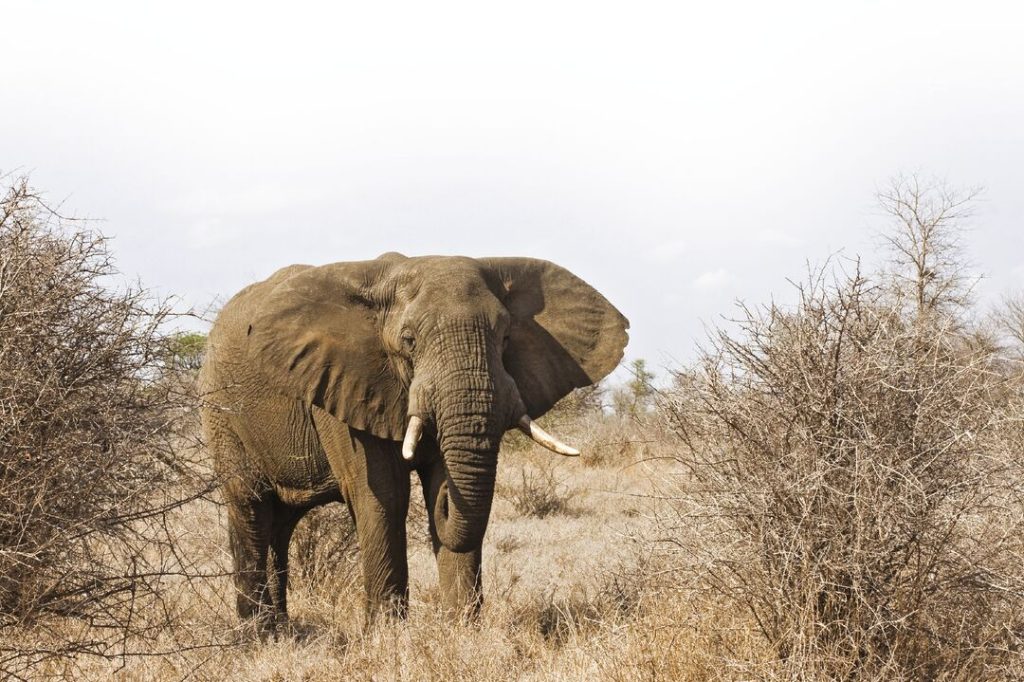
An African savannah elephant
Elephant society is incredibly complex, and they have even been shown to experience and express grief for lost herd member, repeatedly visiting the bones of a deceased family member and carefully touching or caressing bones.
The diet of savannah elephants is herbivorous and varied, including grass, leaves, twigs, buds, fruit, roots and bark.
Much less is known about the behaviour of forest elephants. Their herds are much smaller, reaching up to 20 individuals. They migrate through the forest seasonally, following the ripeness of fruits which form a more significant proportion of their diet, creating a network of permanent trails through the forest that are utilised by other animals, including humans.
African savannah elephants
The major cause of population decline in savannah elephants has been poaching for the ivory trade, with sustained poaching in the 1970s and 1980s. Since then, the threat of poaching in some countries, such as Kenya, Tanzania, Uganda and Zambia, has reduced, meaning populations have started to slowly recover. However, in other countries in northern Africa, poaching levels continue, and there are signs it is increasing in some southern Africa countries.
African forest elephants
African forest elephants have similarly suffered intense poaching for ivory. However, they are also killed for the illegal bushmeat trade.
African savannah elephants
Habitat loss due to land use change for farming, settlements and industry is an increasing threat to elephants throughout the continent. It is reducing their range, preventing elephants from migrating across historic routes, limiting connectivity between populations, and reducing resilience to extreme climatic events (e.g., droughts).
African forest elephants
West Africa lost more than 90% of its forest elephant range during the 20th century, meaning that today remaining populations are small, isolated and fragmented.
African savannah elephants
Savannah elephants wander onto farms and raid crops, causing extensive destruction and damage with a significant economic, social, and psychological impact to the farmers who may retaliate by injuring and even killing elephants.
African forest elephants
As humans encroach further into the habitats of forest elephants, conflict is increasing, and crop raiding leads to retaliatory behaviour from aggrieved farmers. However, the dense forest habitat in which forest elephants live presents a completely different environment in which to address this issue.
Zoos simply cannot replicate the highly complex social and physical environment elephants have evolved to live in and elephants often experience considerable physical and psychological suffering. Globally, they are exploited in circuses and other forms of performance, for religious festivals and ceremonies, for close-contact activities such as riding and bathing, and as living props for souvenir photos and selfies.
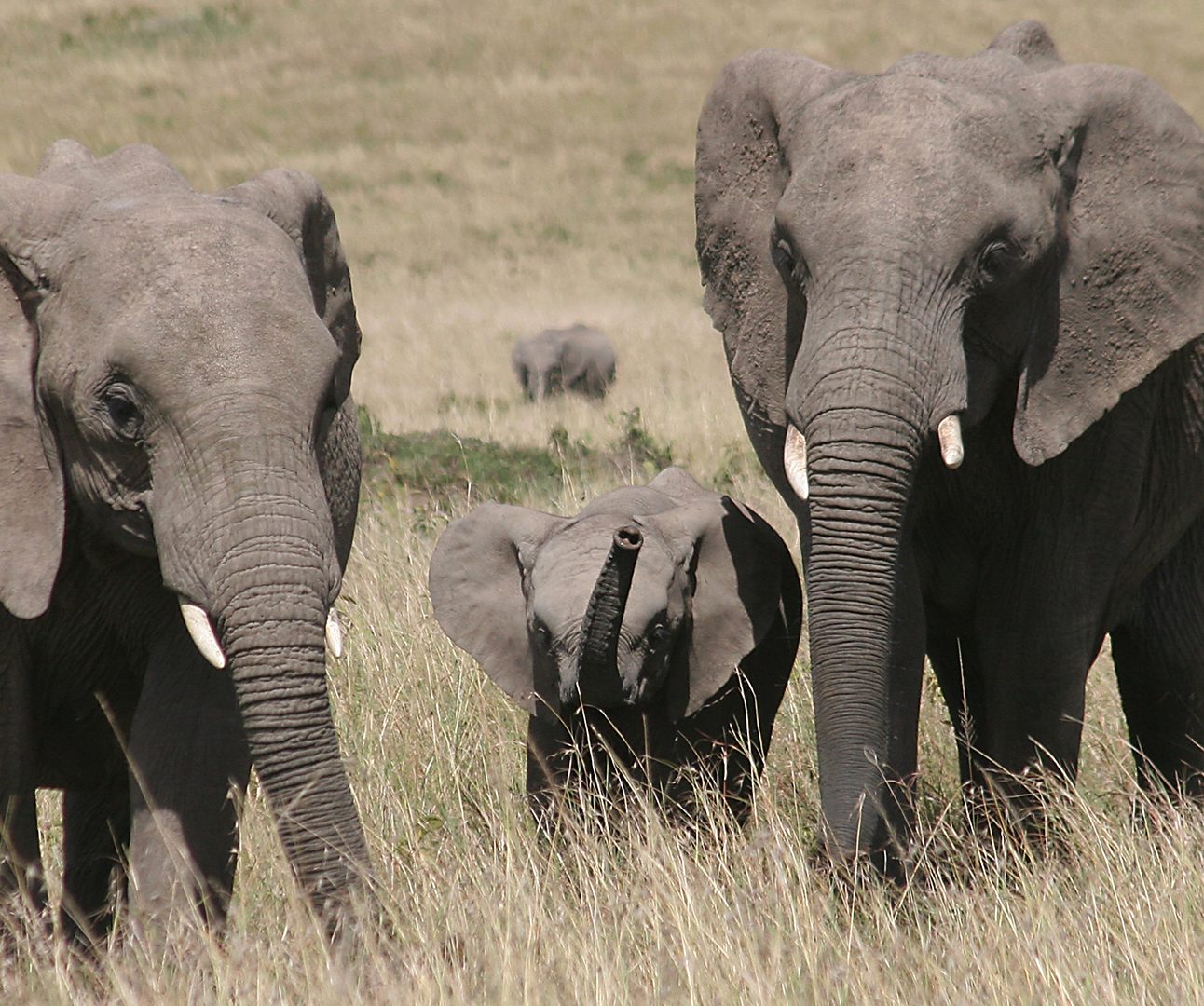
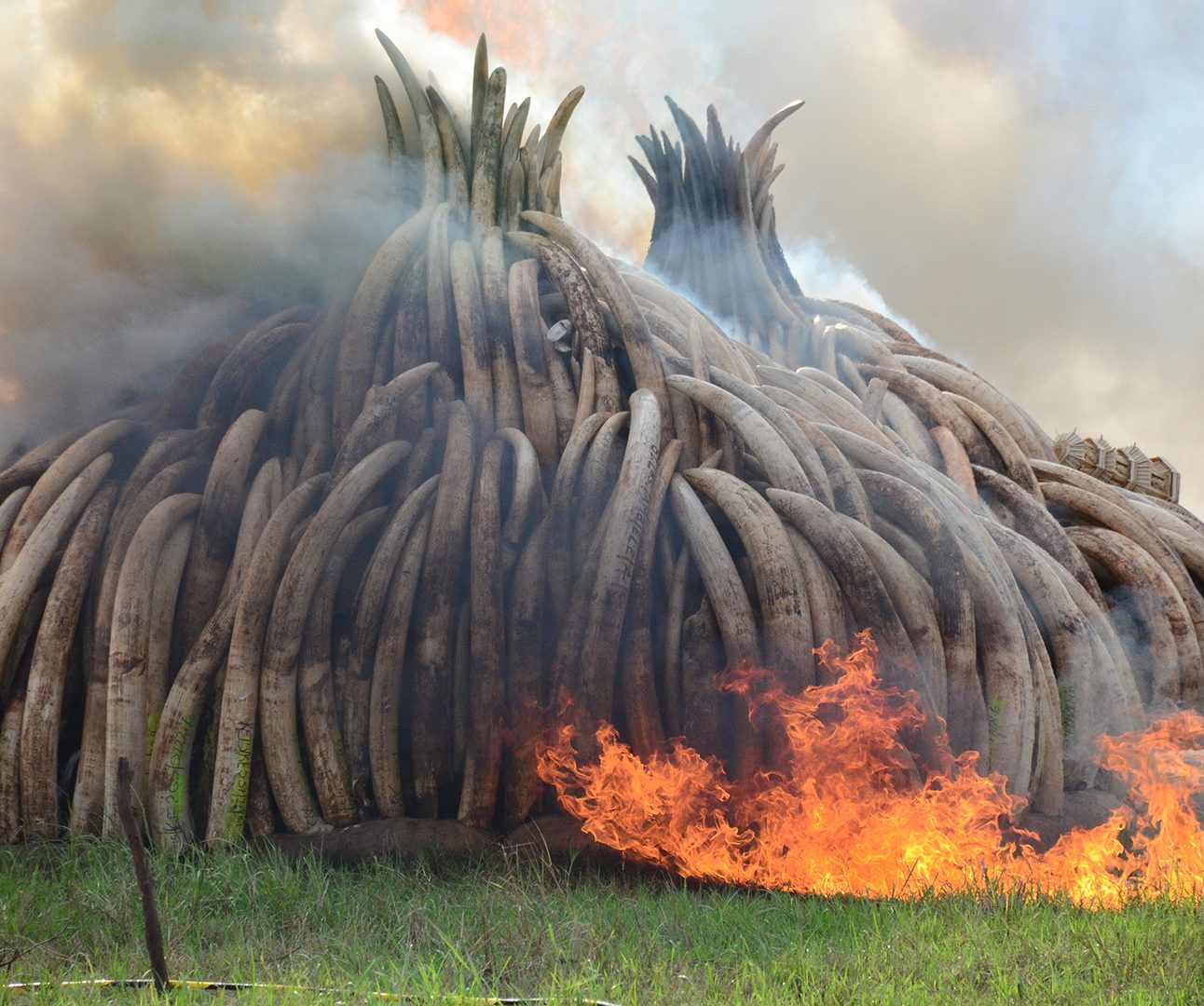
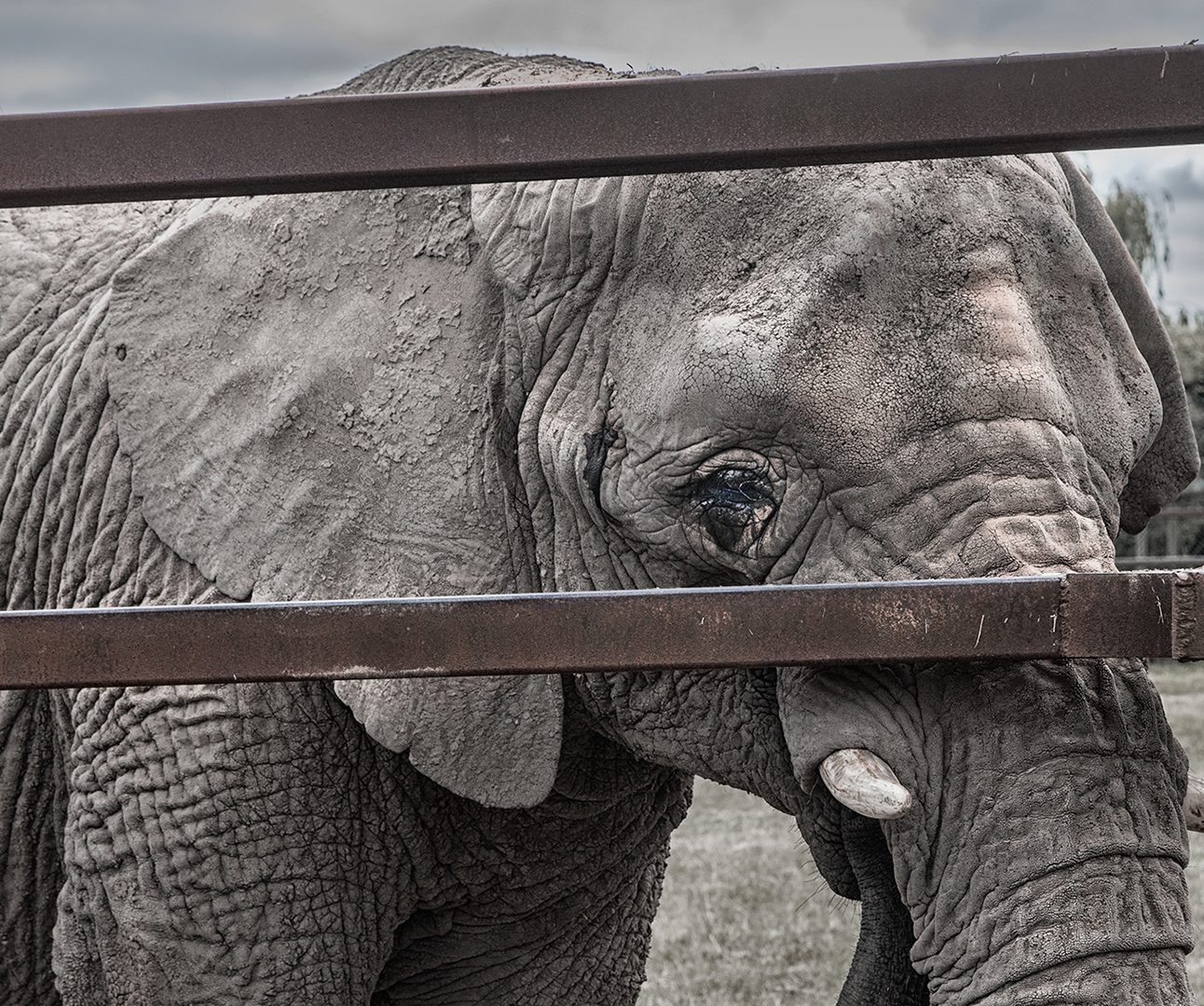
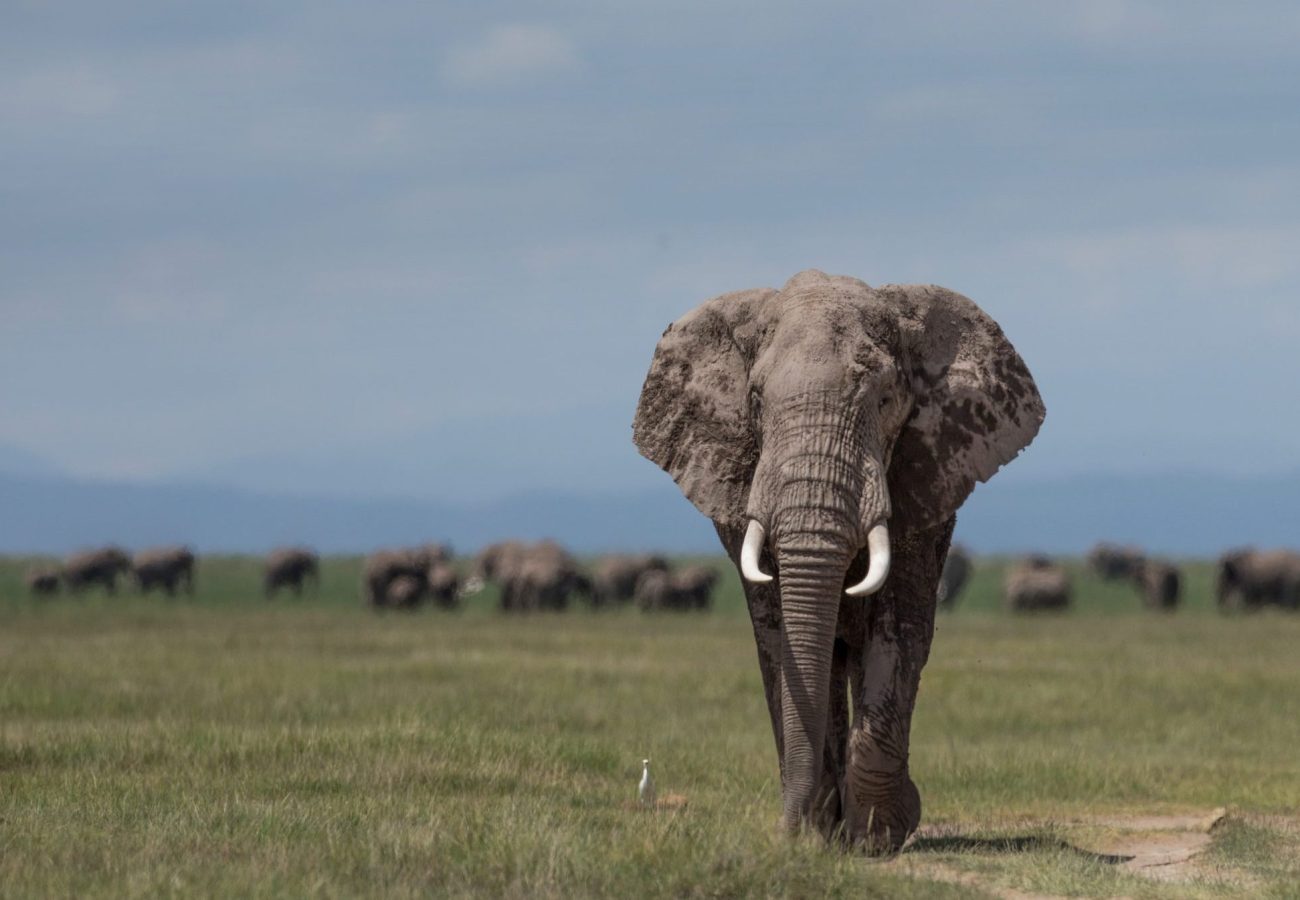
You can support Born Free's work to protect elephants in the wild, and in captivity, by adopting the Elephant Family